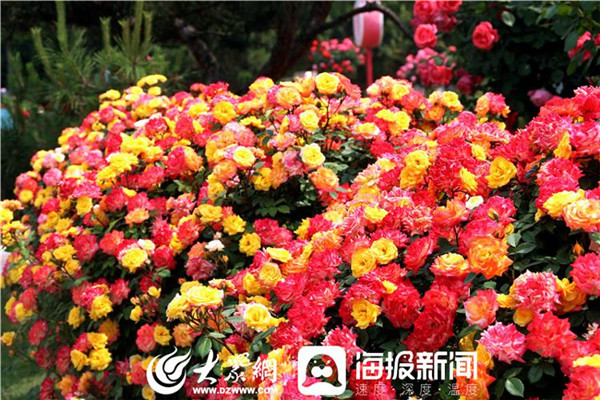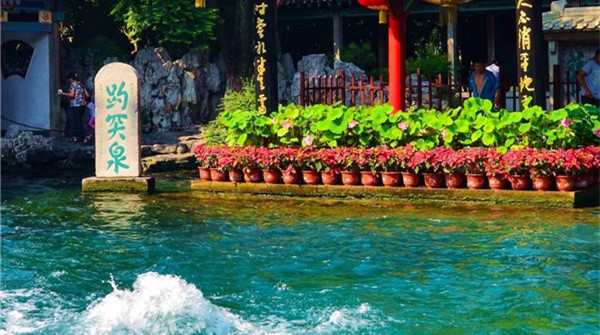Colorful intangible cultural heritages along Yellow River
The Yellow River is known as China's "Mother River", the cradle of Chinese civilization, and is also the birthplace of Qilu culture, which is an integral part of traditional Chinese culture.
Shandong is rich in intangible cultural heritages, folk customs and a colorful history. Check out the list below!
1. Peony flowers in Heze

Girls wearing traditional Chinese hanfu stroll through the Caozhou Flower Garden. [Photo/WeChat account: sdswltwx]
Heze's former name was Caozhou in ancient times, China's biggest producer of the peony flower, and "the hometown of Chinese opera, Chinese martial arts, calligraphy and painting". The legend of the peony flower can be traced back to the Sui Dynasty (581-618), and a popular place in the city to appreciate the flower is the Caozhou Flower Garden, which is located in Heze's Mudan (Peony) district and home to 120,000 peonies of more than 800 varieties in 6-hectare plus flower plantation.
2. Liangshan martial arts in Jining

Performers practice traditional Chinese martial arts at the Shuihu Culture Tourism Zone in Jining's Liangshan county. [Photo/WeChat account: sdswltwx]
Liangshan county in Jining, Shandong province is home to the classic Chinese novel Shuihuzhuan (Outlaws of the Marsh), and is one of the birthplaces of Chinese martial arts. It made the list as a national intangible cultural heritage in 2015, becoming the 18th national intangible cultural heritage in Jining.

 Nishan Forum on World Civilizations
Nishan Forum on World Civilizations Explore magnificent Yellow River culture in Shandong
Explore magnificent Yellow River culture in Shandong

